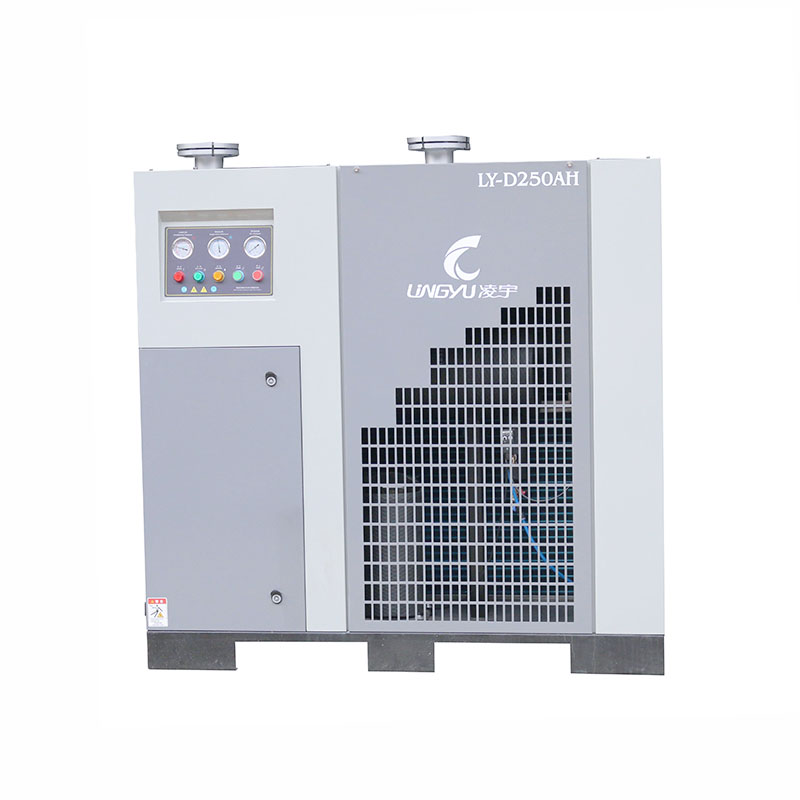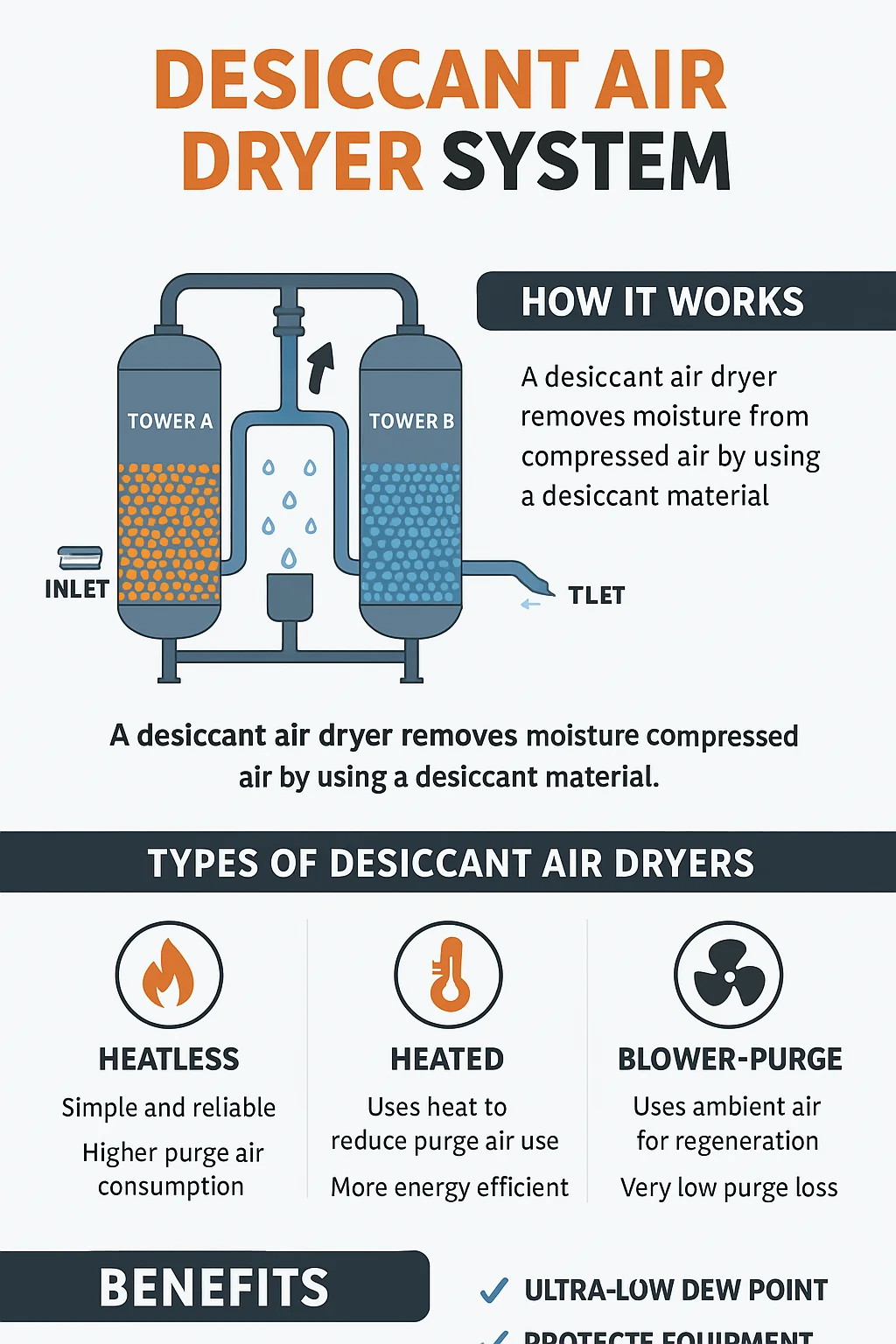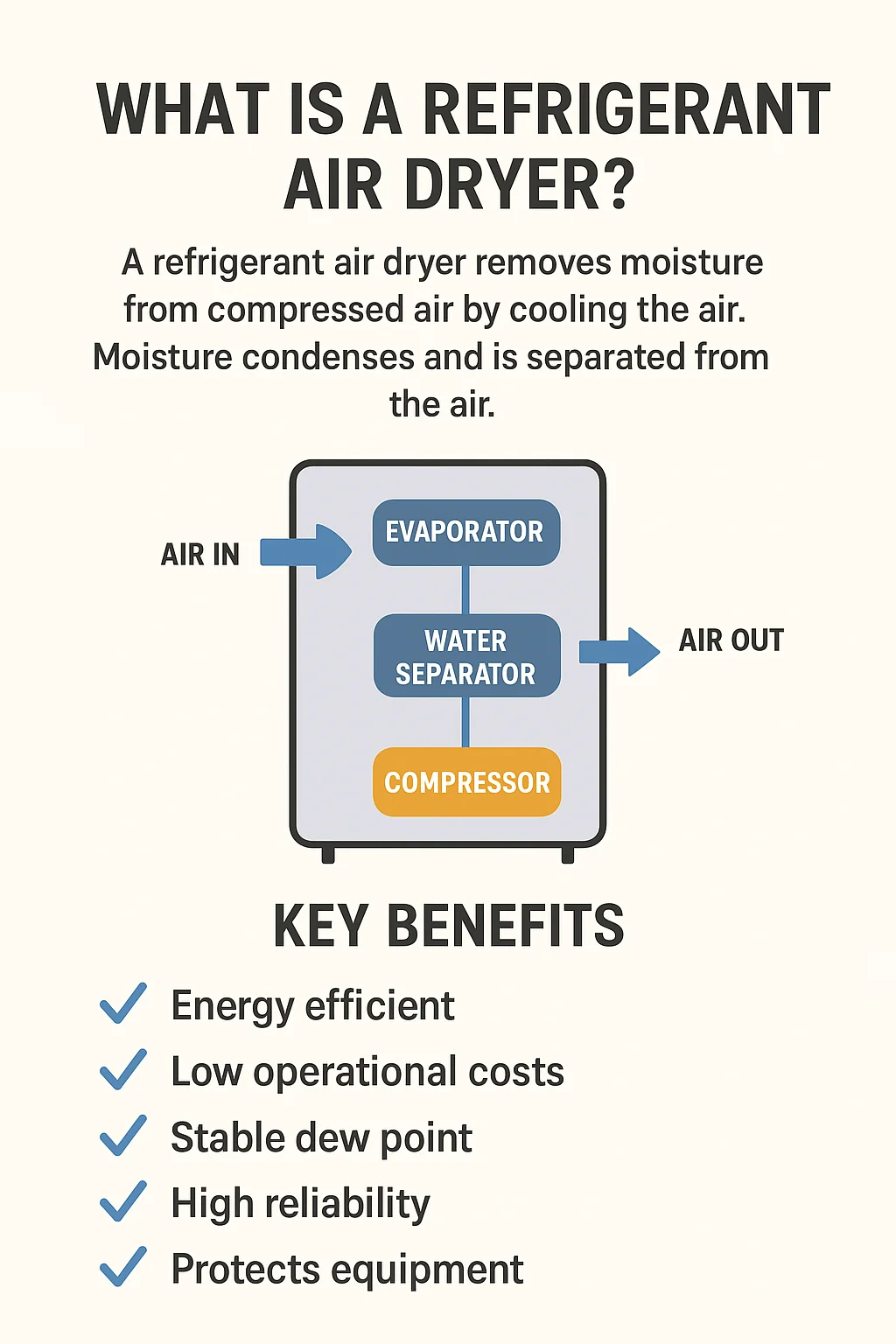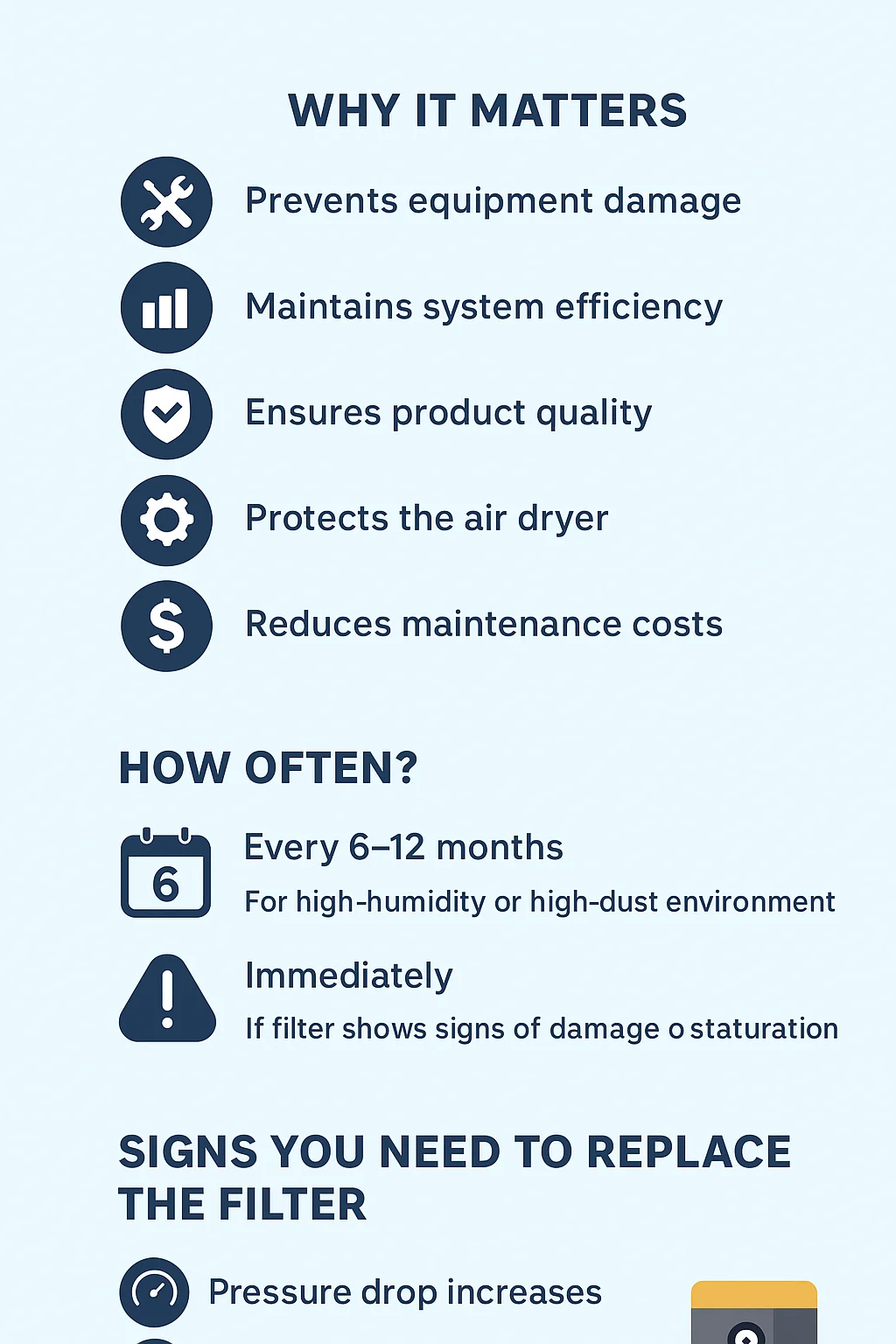A non cycling refrigerated air dryer is one of the most dependable solutions for removing moisture from compressed air. It operates continuously to maintain a stable dew point, making it ideal for applications where constant air demand and quality are essential.
This guide covers how a non cycling refrigerated air dryer works, its advantages, typical applications, and how to select and maintain the right unit for your needs.
What is a Non Cycling Refrigerated Air Dryer?
A non cycling refrigerated air dryer is a type of compressed air dryer that operates continuously, regardless of air demand. It keeps the refrigeration system running at all times, ensuring that the air leaving the dryer remains consistently dry and at the desired dew point.
This type of dryer is widely used because it offers:
Steady performance under varying loads
Low initial cost compared to other technologies
Reliable moisture removal without complex controls
How Does a Non Cycling Refrigerated Air Dryer Work?
The process is straightforward and highly effective:
Warm, Moist Air Inlet – Compressed air enters the non cycling refrigerated air dryer carrying water vapor.
Cooling Process – A refrigeration circuit cools the air to near freezing, condensing moisture into liquid form.
Moisture Separation – A separator removes the condensed water from the air stream.
Reheating – The dried, cool air is reheated to prevent condensation in downstream pipes.
Because the refrigeration compressor runs constantly, the dew point remains stable, protecting equipment and processes from moisture-related problems.
Advantages of a Non Cycling Refrigerated Air Dryer
1. Consistent Dew Point
Unlike cycling models, a non cycling refrigerated air dryer delivers steady dew point performance, even with fluctuating air demand.
2. Simple Design
Fewer moving parts mean less maintenance and fewer breakdowns.
3. Affordable Initial Cost
Lower purchase price compared to cycling refrigerated dryers or desiccant dryers.
4. Reliable for Continuous Loads
Perfect for operations where compressed air is needed around the clock.
Applications of Non Cycling Refrigerated Air Dryers
A non cycling refrigerated air dryer is ideal for industries where a constant supply of moisture-free compressed air is necessary:
Manufacturing Plants – Protects pneumatic tools and machinery.
Automotive Industry – Prevents defects in painting and coating processes.
Food & Beverage – Maintains hygiene and prevents moisture-related contamination.
Electronics Production – Protects sensitive components from moisture damage.
Textiles – Ensures consistent product quality and prevents fiber swelling.
How to Choose the Right Non Cycling Refrigerated Air Dryer
When selecting a non cycling refrigerated air dryer, consider:
Capacity (CFM) – Match dryer capacity to your compressor output.
Inlet Air Temperature – Higher temperatures require more robust cooling capacity.
Operating Pressure – Ensure the dryer is rated for your system’s PSI.
Energy Usage – Non cycling models consume more energy during low-demand periods, so size appropriately.
Maintenance Access – Easy-to-access components reduce downtime.
Maintenance Tips for a Non Cycling Refrigerated Air Dryer
To keep your non cycling refrigerated air dryer performing at its best:
Drain Water Regularly – Check and maintain automatic drains to avoid water buildup.
Clean Heat Exchangers – Prevent efficiency loss due to dirt or scaling.
Monitor Dew Point – Ensure moisture removal remains effective.
Check Refrigerant Levels – Low refrigerant can cause poor drying performance.
Inspect Electrical Components – Avoid unexpected failures by checking wiring and controls.
FAQ – Non Cycling Refrigerated Air Dryer
What is the main difference between a non cycling and cycling refrigerated air dryer?
A non cycling refrigerated air dryer runs continuously, while a cycling model adjusts operation based on demand to save energy.
Does a non cycling refrigerated air dryer waste energy?
It uses more energy at low demand periods, but offers unmatched stability for continuous operations.
Can it be used in high-temperature environments?
Yes, but choose a model designed for high inlet air temperatures.
How long does a non cycling refrigerated air dryer last?
With proper maintenance, it can last 8–12 years or more.
Is it suitable for sensitive industries like food and pharmaceuticals?
Yes, as long as it meets the air purity standards required for those applications.
Conclusion
A non cycling refrigerated air dryer is a reliable, cost-effective choice for operations requiring continuous, moisture-free compressed air. Its simple design, consistent performance, and ease of maintenance make it a favorite in many industries.
While it may use more energy during low-demand periods, its dependability and ability to protect equipment from moisture damage often outweigh the extra energy cost. For businesses that value stability and reliability, a non cycling refrigerated air dryer is a smart long-term investment.
Related products:
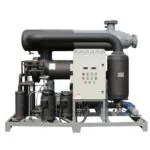
The 3885 CFM refrigerated air dryer (water cooled) is a high-capacity industrial solution designed for removing moisture from large-scale compressed air systems. Built for continuous and demanding operation, this water-cooled unit ensures a steady dew point and maximum system protection. Whether you're operating in petrochemical, steel, manufacturing, or pharmaceutical industries, the 3885 CFM refrigerated air dryer delivers superior drying performance and energy efficiency.
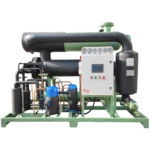
The 4238 CFM refrigerated air dryer (water cooled) is a high-capacity, industrial-grade dryer designed to eliminate moisture from large compressed air systems. Built with a powerful water-cooled refrigeration circuit, this dryer ensures reliable and continuous moisture removal with a stable pressure dew point. For industries that demand high airflow rates and dependable air quality, the 4238 CFM refrigerated air dryer (water cooled) is the ideal solution.
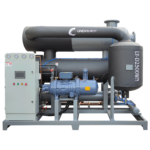
The 8830 CFM refrigerated air dryer (water cooled) is a top-tier industrial solution engineered to remove moisture from large-scale compressed air systems. Built for ultra-high capacity applications, this dryer ensures consistently dry air with a stable dew point and superior thermal control using an advanced water-cooled condenser system.

